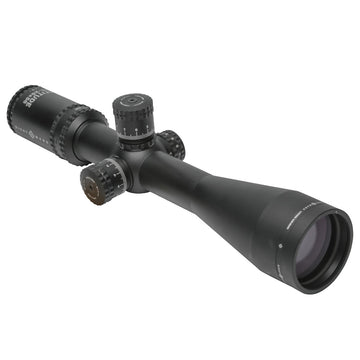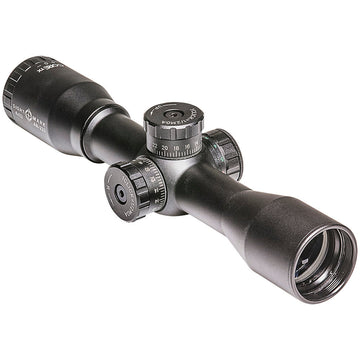Many firearm owners may not fully understand the capabilities of their rifles. For instance, some might mistakenly believe that a 5.56x45mm cartridge retains the same energy at 300 yards as it does at 50 yards. However, physics dictates that a bullet's velocity, and consequently its energy, decreases over distance due to air resistance and gravity. Additionally, certain bullets are specifically designed for short to medium range, which can significantly impact their performance at longer distances.
Definitions of range can vary widely among shooters. While one shooter might consider 500 yards to be medium range, the same distance might be deemed long range by another. This variation is often influenced by the type of firearm used; for example, a short-barreled rifle is generally not expected to perform as effectively at longer ranges as a long-barreled rifle.
The effective range of a rifle is primarily determined by the maximum distance at which it can deliver lethal energy. In this context, we will assume the reader's goal is to hunt deer. For deer hunting, a bullet should deliver at least 1,000 ft-lbs of kinetic energy to penetrate the animal's vital organs. It's important to note that this energy requirement can differ for other game, such as hogs or elk, which may need more kinetic energy for an ethical kill.
Top Riflescope Options for Deer Hunting Calibers
Effective Ranges of Popular Deer Hunting Calibers
As an example, let's consider the effective ranges of some popular calibers. A 5.56x45mm NATO cartridge, commonly used in AR-15 rifles, typically loses substantial energy at shorter ranges than, say, a .308 Winchester, making it less effective for medium to long-range hunting. However, these variables depend on specific loads and bullet designs.
Understanding these differences is crucial for choosing the right caliber for your intended purpose. A hunter aiming for deer at moderate distances might opt for a .243 Winchester or a 6.5 Creedmoor, both of which offer a good balance of trajectory and energy retention beyond that of a short-range cartridge like a .300 Blackout. Conversely, for those targeting larger game or requiring extended range performance, calibers like the .300 Winchester Magnum or the .375 H&H would be more appropriate, given their superior energy retention over long distances.
Based on the following chart, we can determine the maximum effective range of the most popular calibers:
| Caliber | Bullet Type | Grains | Max Range (yards) at 1,000 ft-lbs |
| .300 Blackout | Soft Point | 150gr | 77 |
| .223 / 5.56 | Jacketed Soft Point | 55gr | 85 |
| .30-30 | Jacketed Soft Point | 170gr | 175 |
| 6.5 Grendel | Fusion Soft Point | 120gr | 250 |
| .243 Winchester | Jacketed Soft Point | 80gr | 350 |
| .308 Winchester | Jacketed Soft Point | 180gr | 490 |
| .270 Winchester | Jacketed Soft Point | 130gr | 500 |
| 6.5 Creedmoor | Jacketed Soft Point | 140gr | 500 |
| .30-06 | Jacketed Soft Point | 180gr | 550 |
| .375 H & H Mag | Jacketed Soft Point | 300gr | 600 |
| 7mm Rem Mag | Jacketed Soft Point | 150gr | 650 |
| .300 Win Mag | Jacketed Soft Point | 180gr | 750 |
When selecting a cartridge for deer hunting, the choice significantly impacts the effective range and suitability for the task. Cartridges like the .300 Blackout and .223/5.56 are ideal for shorter ranges and specific hunting environments but lack the energy to humanely take deer at longer distances. Conversely, high-velocity, long-range cartridges such as the .300 Win Mag, 7mm Rem Mag, and 6.5 Creedmoor are designed for extended ranges, offering the necessary energy and accuracy to ensure ethical kills at distances exceeding 500 yards. It's crucial to match the cartridge to the expected hunting conditions and distances.
As every hunter knows, a well-placed shot ensures a quick and humane kill. Regardless of the cartridge chosen, precise shot placement is essential to delivering the required energy to the target effectively. Poor accuracy can result in wounding the animal, leading to unnecessary suffering and potential loss of game. Sightmark boresights can significantly aid hunters in achieving this accuracy. These tools allow for precise zeroing of rifles, ensuring that the point of aim aligns perfectly with the point of impact. By using Sightmark boresights, hunters can fine-tune their firearms, increasing their confidence and proficiency in the field, ultimately leading to more successful and ethical hunts.
To shop Sightmark boresights, click here.
Frequently Asked Questions
How does bullet velocity and energy change over distance?
Bullet velocity and energy decrease over distance due to air resistance and gravity.
What determines the effective range of a rifle for deer hunting?
The effective range of a rifle for deer hunting is primarily determined by the maximum distance at which it can deliver at least 1,000 ft-lbs of kinetic energy to penetrate the animal's vital organs.
Why is it important to consider the type of firearm used when determining range?
The type of firearm used can impact the effective range, as a short-barreled rifle is generally not expected to perform as effectively at longer ranges as a long-barreled rifle.
What are some popular deer hunting calibers and their effective ranges?
Popular deer hunting calibers like .243 Winchester or 6.5 Creedmoor are good for moderate distances, while calibers like .300 Winchester Magnum or .375 H&H are suitable for larger game or extended range hunting.
How can understanding bullet design and specific loads impact effective range?
Bullet design and specific loads can impact the energy retention and performance of a caliber at different ranges, making it crucial to consider these factors when choosing the right caliber for hunting.








8 comments
I have lost count of the number of deer I have taken over the years with my 6mm Remington. About 100 to 150 FPS faster than the 243 with a 100 gr bullet. Sighted in at 200 yards, perfect for hunting deer at most ranges encountered. Unless you hunt the wide open spaces, you don’t need more rifle.
I feel the same Al Ford. I’m a 69 year old stoke survivor. I now have to have someone practically beside me. My favorite are the 270 calibers. I haven’t used my 270wsm or the 6.8 Western. In fact, I put scopes on them and put them in the safe.. I’ll continue to use my trusted 270Win.
@74 yrs. Old I’m limited to the terrain.I hunt from a tree stand.Most shots are 300-325 yds. I shot per kill.270 6-24 x scope.Love the cal.w/ Fed.Prem.130’s
Using the 1000 energy foot-pound rule is only the start it is a lot more than that. Bullet design is more important than energy. You need to get the bullet to where it needs to go expand controllable to do maximum damage. To get the animals blood pressure to zero as fast as possible.
This article has a welt of knowledge. Thanks.